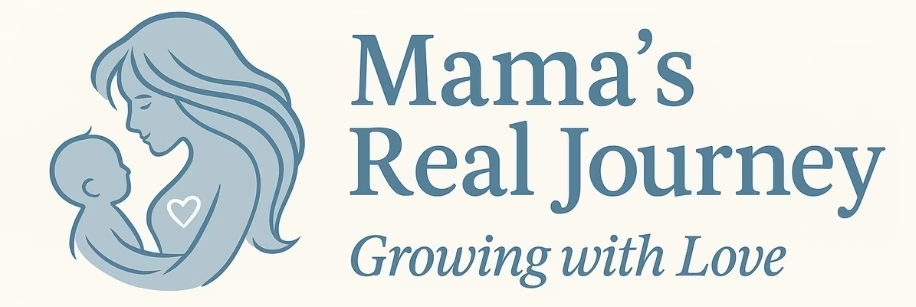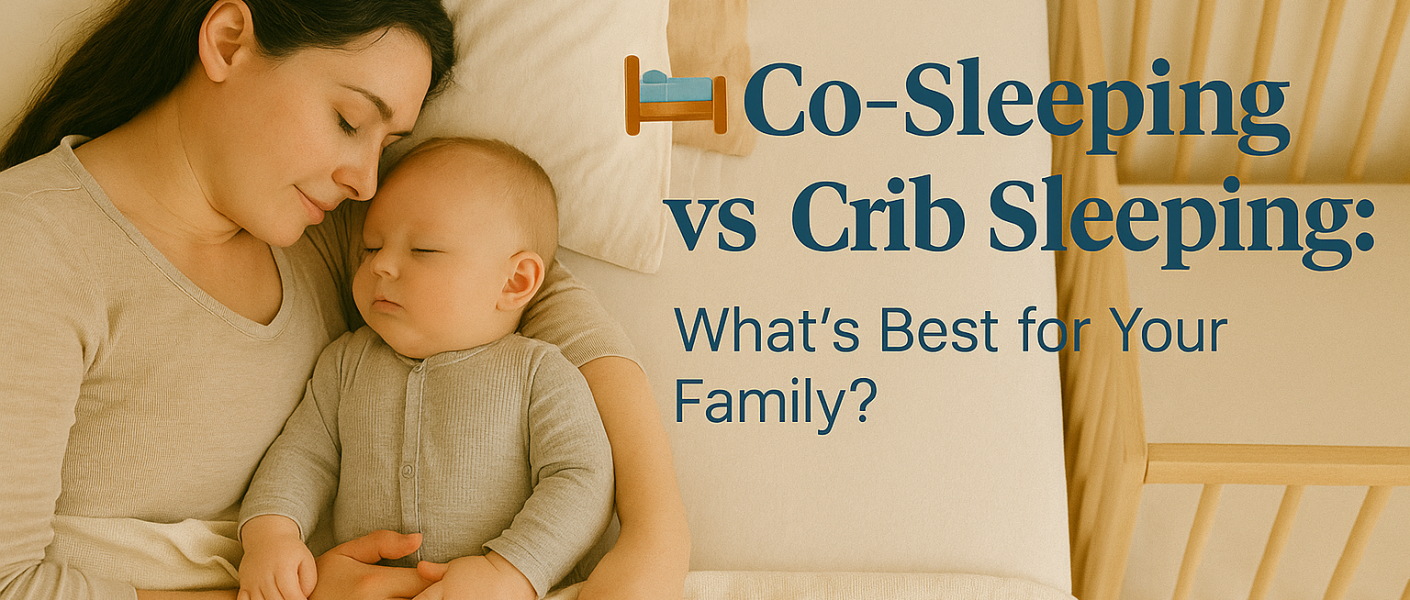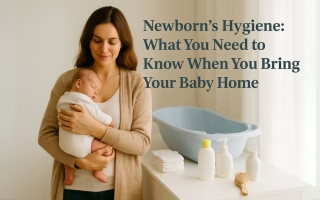Co-sleeping vs crib sleeping is a choice every family approaches differently — here’s why I chose to sleep with my babies and how it deepened our bond.
One of the first big questions parents face after bringing their baby home is:
Where should my baby sleep?
In a crib? In a bassinet? In your bed?
As with many parenting choices, the answer isn’t black and white. It’s deeply personal — and often shaped by instinct, lifestyle, and your baby’s unique needs.
In our home, we chose co-sleeping from the very beginning — and I want to share how that decision supported both my babies and my motherhood journey.
👶 What Is Co-Sleeping?
Co-sleeping means sharing a sleep space with your baby. It can take several forms:
- Bed-sharing (baby sleeps in the same bed with you)
- Room-sharing (baby sleeps in a separate bassinet or crib in the same room)
- Sidecar crib (crib attached to your bed)
I chose bed-sharing — safely and intentionally — from day one.
🍼 Why Co-Sleeping Worked for Us
As a breastfeeding mom, having my baby next to me at night made everything easier:
- I didn’t have to get out of bed for every feed
- I could respond quickly to night wakings
- Baby stayed calm and settled more easily
- And I got more sleep, which helped me recover and stay emotionally present
But it wasn’t just about convenience — it was also about connection.
My daughters felt secure, loved, and attached.
They could hear my breath, feel my warmth, and know I was there.
That closeness shaped our bond deeply — and even now, they carry that sense of safety.
🛏️ What About Crib Sleeping?
Crib sleeping (in the same room or in a separate nursery) is the most widely recommended setup in the U.S., especially by pediatric associations.
Benefits of crib sleeping:
- Promotes independence
- May reduce risks if safe bed-sharing practices aren’t followed
- Allows both parents to sleep more freely
- Works well for some babies who prefer their own space
Some families find it creates a better long-term sleep routine — especially if returning to work early.
⚖️ Comparing the Two Approaches
| Aspect | Co-Sleeping | Crib Sleeping |
|---|---|---|
| Night Feedings | Easier access to baby | May involve getting up often |
| Bonding | Close, skin-to-skin contact | Still strong with room sharing |
| Sleep Quality | Better for breastfeeding moms | Baby may sleep longer alone |
| Independence | May develop later | Encouraged from early on |
| Safety | Needs strict precautions | Safer if parents smoke or are overtired |
🧡 My Experience as a Mom
I breastfed both of my daughters — one for two years and the other I’m still nursing.
Co-sleeping made those countless night feeds feel gentle and natural, not disruptive.
Yes, I sometimes woke up in odd positions.
Yes, I sometimes missed sleeping freely.
But I also woke up to their soft breath, their tiny hands resting on me, and a closeness that shaped our relationship.
For us, co-sleeping felt safe, intuitive, and beautiful.
🔐 Safety First — Co-Sleeping Guidelines
If you choose to co-sleep, follow these precautions:
- No smoking, drinking, or sedating medication
- Firm mattress, no pillows or blankets near baby
- Baby sleeps on their back
- Keep baby away from edges and gaps
- Dress baby lightly (your body heat keeps them warm)
You can also use a sidecar-style crib if you want closeness with extra space.
✨ Final Thoughts
There’s no single “right” way to help your baby sleep.
Co-sleeping and crib sleeping both come with benefits and trade-offs.
What matters most is what feels right for your family — what helps you feel rested, connected, and confident.
And mama, no matter where your baby sleeps — in a crib, a bassinet, or curled up next to you — know this:
You are doing an incredible job.




